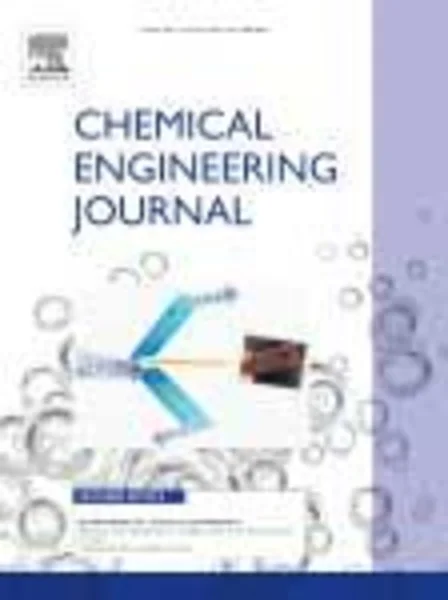-
removal characteristics of organics in bio-treated textile wastewater reclamation by a stepwise coagulation and intermediate gac/o3 oxidation process
جزئیات بیشتر مقاله- تاریخ ارائه: 1392/01/01
- تاریخ انتشار در تی پی بین: 1392/01/01
- تعداد بازدید: 680
- تعداد پرسش و پاسخ ها: 0
- شماره تماس دبیرخانه رویداد: -
removal characteristics of organics in bio-treated textile wastewater reclamation by a stepwise coagulation and intermediate gac/o3 oxidation processin this study, a novel hybrid process involving stepwise coagulation and intermediate ozonation in the presence of granular activated carbon (gac/o3) was employed to remove effluent organic matter (efom) from bio-treated textile wastewater. removal behavior of efom in different processes, including biodegradability, hydrophobic and hydrophilic property, and apparent molecular weight (amw) distribution, were evaluated as well. when the polyaluminum chloride (pacl) dose of 25 mg l−1 as al was used in both pre-coagulation (ph 8.0) and post one (ph 5.5), and the ozone dose of 3.1 mg o3 mg−1 cod was applied in gac/o3 (gac 10 g l−1) lasting 5 min, the superior removal efficiencies of water quality parameters like turbidity, color, cod, doc and uv254 were 95.8%, 97.5%, 88.1%, 68.7% and 90.5%, respectively. results also showed that gac/o3 not only gave the efficient decolorization and doc removal, but also enhanced the treatability of biodegradable and hydrophilic organics of awm in 1–10 k da by post coagulation, likely due to the effective removal of colored and hydrophobic organics in amw > 1 k da via pre-coagulation. therefore, the hybrid process applying appropriate operational parameters was proved to be an attractive strategy in the wastewater reclamation.
مقالات جدیدترین رویدادها
-
استفاده از تحلیل اهمیت-عملکرد در ارائه الگوی مدیریت خلاقیت سازمانی و ارائه راهکار جهت بهبود
-
بررسی تاثیر ارزش وجوه نقد مازاد بر ساختار سرمایه شرکت های پذیرفته شده در بورس اوراق بهادار تهران
-
بررسی تأثیر سطح افشای ریسک بر قرارداد بدهی شرکت های پذیرفته شده در بورس اوراق بهادار تهران
-
بررسی تأثیر رتبه بندی اعتباری مبتنی بر مدل امتیاز بازار نوظهور بر نقد شوندگی سهام با تأکید بر خصوصی سازی شرکت ها
-
تأثیر آمیخته بازاریابی پوشاک ایرانی بر تصویر ذهنی مشتری پوشاک ایرانی (هاکوپیان)
-
بررسی اثر پارامترهای سطوح مشترک بر رفتار دیوارهای حایل سنگ چین با استفاده از روش اجزا منفصل
-
اثرات کوتاه و طولانی مدت عصاره پرسیاوشان روی هموگلوبین، هماتوکریت، حجم گلبول های قرمز، زمان پروترومبین و زمان ترومبوپلاستین
-
بررسی جهش هاى نادر ژن بتاگلوبین در شمال غرب کشور
-
simulation of polycrystal deformation with grain and grain boundary effects
-
determination of mechanical properties of soft tissue scaffolds by atomic force microscopy nanoindentation
مقالات جدیدترین ژورنال ها
-
مدیریت و بررسی افسردگی دانش آموزان دختر مقطع متوسطه دوم در دروان کرونا در شهرستان دزفول
-
مدیریت و بررسی خرد سیاسی در اندیشه ی فردوسی در ادب ایران
-
واکاوی و مدیریت توصیفی قلمدان(جاکلیدی)ضریح در موزه آستان قدس رضوی
-
بررسی تاثیر خلاقیت، دانش و انگیزه کارکنان بر پیشنهادات نوآورانه کارکنان ( مورد مطالعه: هتل های 3 و 4 ستاره استان کرمان)
-
بررسی تاثیر کیفیت سیستم های اطلاعاتی بر تصمیم گیری موفق در شرکتهای تولیدی استان اصفهان (مورد مطالعه: مدیران شرکتهای تولیدی استان اصفهان)
-
نقش حسابداری مدیریت استراتژیک در عملکرد سازمانی (مطالعه موردی : هتل های 5 ستاره شهر تهران)
-
طراحی الگوی سقف شیشه ای با رویکرد نظریه داده بنیاد
-
بررسی عوامل موثر مدل سازی فرآیندهای کسب و کار(bpm) در قالب چارچوب itil جهت ارتقای هوش تجاری (bi) در سازمان تامین اجتماعی تهران
-
نقش ویژگی های کمیته حسابرسی بر رابطه بین انطباق مالیاتی و هموارسازی سود
-
بررسی ارتباط بین ضعف کنترل های داخلی و همزمانی قیمت سهام در شرکت های پذیرفته شده در بورس اوراق بهادار تهران: تبیین نقش تعدیلگر ویژگی های هیئت مدیره




سوال خود را در مورد این مقاله مطرح نمایید :